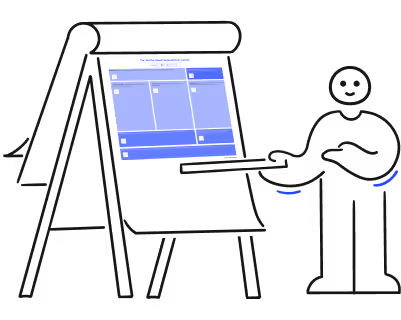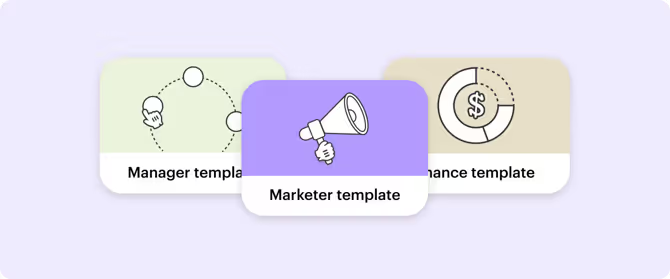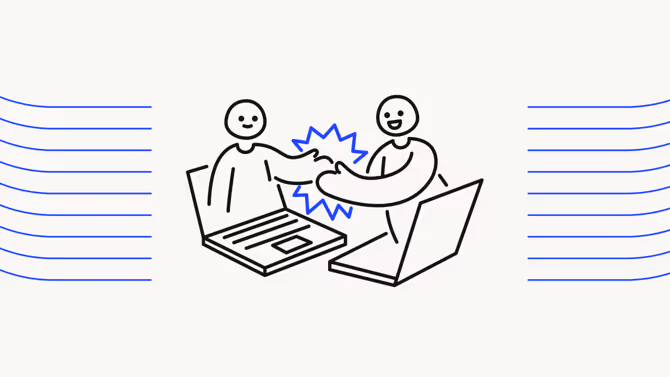What is the best way to onboard a new hire?

Empower your organization with the skills-based canvas.

Human resources managers face challenges and problems every day, not the least of which is the onboarding of new hires. After all, helping an individual adapt to a new environment can be a complex task. In this article, we explore the challenges that underlie the onboarding process and share some tips to successfully onboard employees.
What is onboarding?
Onboarding or organizational socialization is a term that refers to the integration of new employees in an organization. This process helps new hires better understand their role as well as their responsibilities. Different activities are involved during the onboarding process such as filling out paperwork, scheduling meetings, organizing team training, etc.
Onboarding is a process where both managers and employees are involved. The duration of the onboarding process depends on the company. It can last a few weeks or up to a year. In a nutshell, onboarding lays the foundations of a good relationship between the organization and the employee. It promotes loyalty and encourages productivity.
{emphasize}
Managing employee onboarding: why is it so important?
{emphasize}
Is employee onboarding only for new hires?
Onboarding not only applies to new employees, but also to those who will have been given new responsibilities within the organization. This is also known as crossboarding.
Who oversees the onboarding process?
The onboarding process is not merely the responsibility of the HR manager. It also falls under the purview of the employee’s immediate supervisor. It is, after all, incumbent on the latter to ensure that the employee understands their role in the company and has a clear idea of what is expected of them. It is also the job of the immediate boss to integrate the employee into the company’s culture.
What are the benefits of onboarding?
Onboarding can be used to build a bond of trust and closeness between employees and the organization. It can also:
- Nurture greater employee loyalty and commitment
- Create a unique and enjoyable employee experience
- Help retain new employees
- Demonstrate that you are interested in investing in your employees
- Enrich the company culture
- Drive productivity
How long should employee onboarding last?
HR managers agree that the minimum onboarding time is 3 months. A week or two does not create a sufficient bond between the organization and the employee. They should be given time to acclimatize to a new place, new policies, and new people.
The onboarding experience must continue even during the first year, to ensure that the employee learns all that they need to, and gain confidence, both in themselves and their employer. To achieve a smooth onboarding process, you need to plan and customize the onboarding process.
How weak onboarding programs harm your small business
Weak or no onboarding can have negative consequences for small businesses and their employees. Not knowing how to handle the onboarding process can lead to higher employee turnover. Other disadvantages include:
- Low employee morale
- Low productivity
- Lack of trust in the organization
- Failure to achieve objectives and goals
- Etc.
How to onboard a new hire
Investing time in employees increases ROI and lowers employee turnover. Getting off to a good start in the first few weeks is crucial for the employee/organization relationship. But how do you get started? Below we share onboarding best practices.
Establish an employee handbook
An employee handbook should include a description of the company's mission, vision, policies, values, and members. This can be a great resource for the employee, and lay the foundation of their professional journey within the organization.
Set goals within 90 days
Onboarding also involves giving employees a sense of direction and making them feel like a part of the team. Setting goals that they will need to achieve within 90 days is a good way to initiate this process. As they go about trying to meet their objectives, you should always ensure that you are there to provide guidance and resources. You can even pair them with veteran employees while they pursue their goals. This will enable them to really get a feel for how the company works.
Provide individual feedback
It’s good practice to schedule one-on-one meetings of 15 minutes each week during the first 60-90 days. Take this time to learn about the employee's successes, challenges and frustrations, and help them address any concerns they might have.
Introduce them to clients and employees from other divisions
Giving your new employee the opportunity to talk and listen to a client or someone from another division of the company will give them a sense of the larger picture. In addition, it’s a good way to foster employee engagement.
Onboarding program components
There are many ways to design an onboarding program. Many companies have their own models. However, there are essential components to this process that are universal.
Preboarding
Preboarding begins at the point in the hiring process when the job offer is accepted, but before the start date. During this period, employers:
- Do a tour of the facility with the employee
- Help the employee find accommodation, if the position requires them to relocate
- Send an onboarding kit
- Connect the new employee with a work buddy
Or... Discover how to revamp your onboarding program with our free templates! Don't waste any more time and grab them now to make your onboarding program stand out from the crowd.
Orientation
This is an event where the new hire is taught all about the company's policies and organizational culture, learns about the company's handbook, and fills out forms and work papers. This stage can last up to a week.
Mentoring
Mentoring seeks to pair a new employee with a veteran in order to provide support during the onboarding process. These mentors can be volunteers or employees assigned by HR to perform the role. A mentor can be a guide for days, weeks, or a year, depending on the job’s roles and responsibilities.
Reboarding
This is a process for employees returning from a long period of leave, or being transferred or promoted. Reboarding is about getting the employee acquainted with current and upcoming projects. It allows them to adapt to the culture, the new team, and the work environment.
Tips for successfully onboarding a new employee
Invest in a corporate LMS
Many companies, whether small, medium, or large, hesitate to invest in a good enterprise learning management system (LMS). However, e-learning is a very effective form of online training that can be customized to each employee’s needs. Among its benefits are better control of the training process, enhanced collaboration between facilitators and learners, and reduced training costs. It can update the skills, and enhance the knowledge of the employees being trained. It can also facilitate their career development.
Set a rhythm
In some companies the onboarding process is rushed, pushing the employee to adapt quickly. In the medium and long term, this is counterproductive because it can lead to low productivity or resignation. Employees should be given time and space to settle in, integrate into the corporate culture and get to know their functions in depth.
Improve your onboarding process
Training employees is key to a company’s success. Workleap LMS is a flexible and customizable training platform for teaching and learning. Among other things, it enables remote onboarding, which can be more effective for new employees, as all the material is in the system and they can acquire the necessary knowledge at their own pace. If you want to improve your employee’s experience and help a new hire adapt to their position as quickly as possible, working with a corporate LMS is a great solution.
Discover, manage, and grow your team’s skills to unleash their potential and retain your rising stars.


%20(1).avif)


.avif)
.avif)








